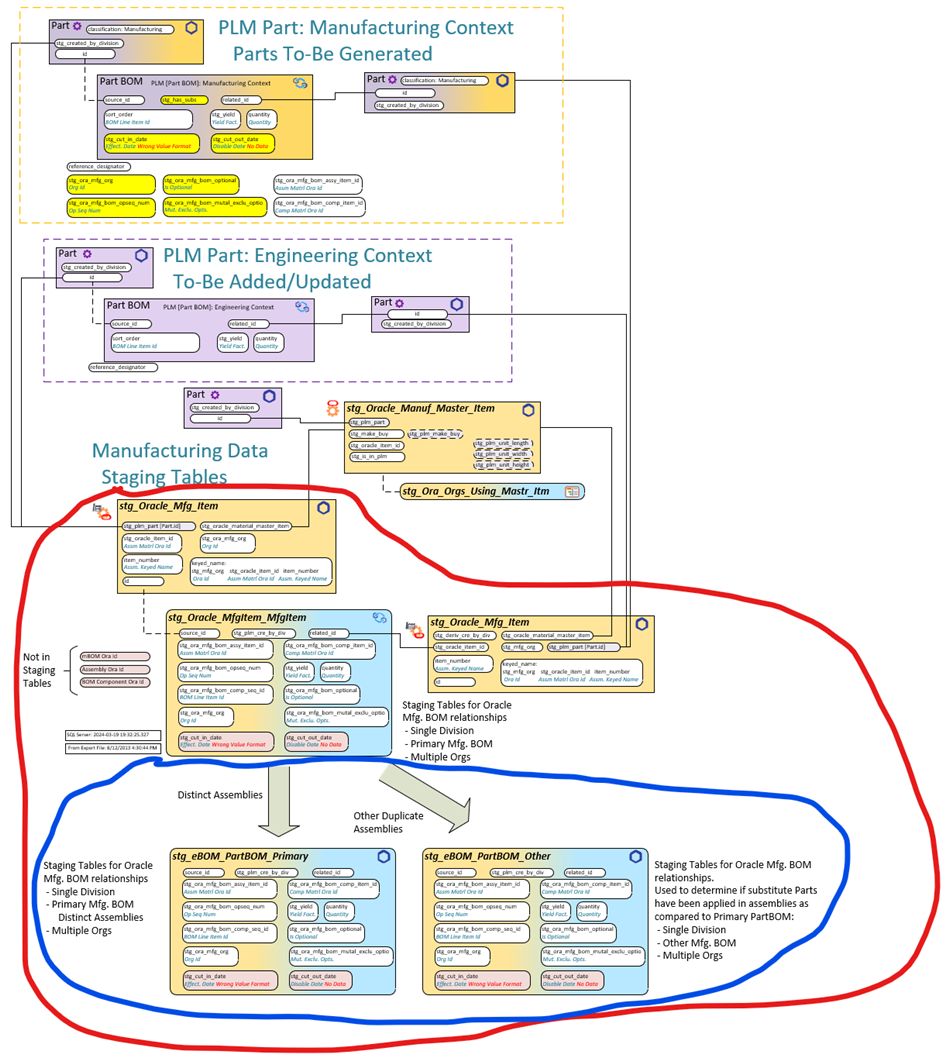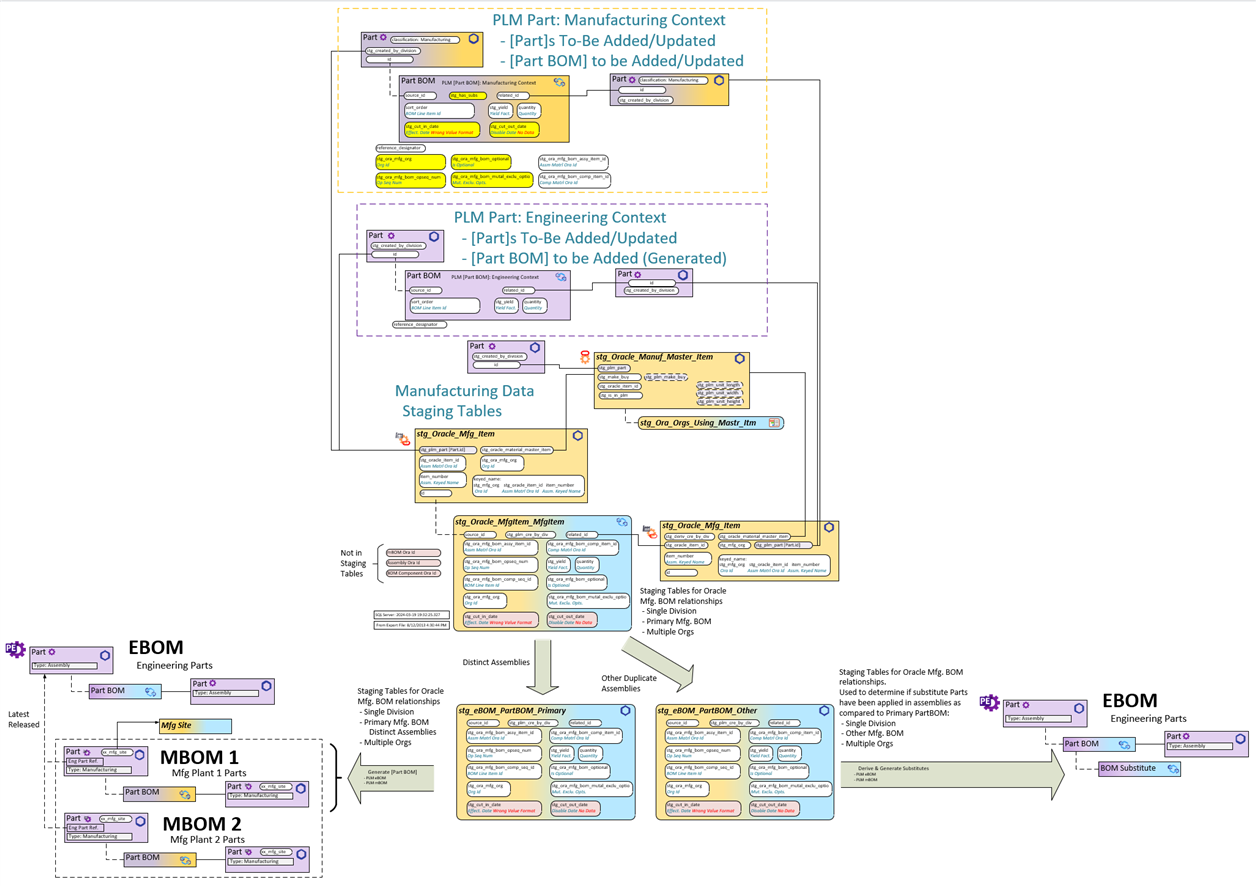Community,
I have created a staging table capability that will be used to generate innovator eBOMs from Oracle manufacturing BOMs.
My challenge is working with 1.7 million rows of data in SQL Server.
I know I could create a SQL procedure to get the unique (distinct) oracle Assembly IDs but I would like to use a Query Definition.
In the data model below, what is circled in RED is the Oracle Data. What is circled in Blue is where I am separating a
1) [multi-Division, multi-Ora Org, with non distinct Assemblies (by Ora Org)] : stg_Oracle_MfgItem_MfgItem
INTO
2) [single-Division, multi-Ora Org, Distinct Primary Assemblies] stg_eBOM_PartBOM_Primary
AND
3) [single-Division, multi-Ora Org, Other Assemblies (without Primary PartBOM)] stg_eBOM_PartBOM_Other
The goal is as follows:
2) stg_eBOM_PartBOM_Primary will be used to generate the innovator [Part BOM] relationships
3) stg_eBOM_PartBOM_Other will be compared to stg_eBOM_PartBOM_Primary to derive Substitutes
So I would like to use a Query Definition to gather all the Distinct Oracle Assembly IDs so I can populate the stg_eBOM_PartBOM_Primary table.
Thanks in advance for your time and insight.
Scott




